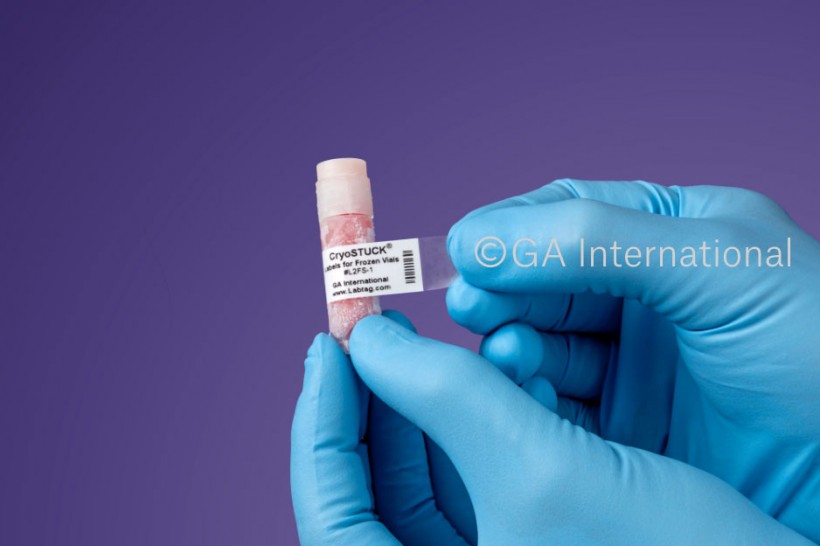Many labs, especially in academia, still manually identify their samples and specimens by writing on their vials and tubes by hand. They might also write on some color tape, increase their writing area, and apply some color coding. These identification methods will often fail; they will either smudge, fade, or fall off the vials, leaving them unidentifiable. The use of laboratory labels can help remedy this problem and ensure your valuable samples remain clearly identified.

Printable Laboratory Labels
To securely and reliably identify samples, reagents, buffers, and equipment in the lab, printing lab labels is the best solution. Printable labels for laboratory containers are available for a variety of printing methods, from standard desktop digital printers (laser and inkjet) to dedicated label printers (direct thermal and thermal-transfer).

The different printers all have their own benefits and drawbacks and should be properly assessed before a final decision is made. Laser and inkjet printers are commonly already found in most labs, and as such, don't require a significant initial investment to start. They also offer superior options when it comes to printing in color, especially inkjet printers. Thermal-transfer lab labels offer the most effective resistance to harsh environments and are far more durable than other types of labels. They can represent a higher initial setup cost but represent a good value over time. Direct thermal printers, including DYMO printers, are a cost-effective option when choosing a dedicated label printer and are also conveniently portable for use throughout the lab.

Overall, printed lab labels provide a more consistent printout than manually writing information, ensuring the information remains legible. By printing the relevant data, you can fit far more information than by handwriting and ensure it's easily readable (solves the problem of bad handwriting). Furthermore, most printable laboratory labels are also smudge-proof and fade-proof, guaranteeing the information won't become compromised during long-term storage or heavy use.
Choose Labels Suited for Their Environment
The experimental and storage conditions the identified containers will undergo should also be considered, as this can seriously affect your identification method of choice. Using thermal-transfer labels is the optimal choice, as their labels offer the greatest resistance to various conditions. Labs that use harsh chemicals and solvents should ensure their labels can withstand direct or indirect exposure and, in some instances, complete immersion in those chemicals. This can include spraying with alcohols for protocols that require regular disinfection, such as cell culture, xylene-resistance for Histology labs that will immerse their slides in xylene, or resistance to formalin/ethanol mixes used by pathology labs to preserve tissue and specimen. Lab safety labels might also be helpful to ensure staff is aware of potentially harmful chemicals present in the lab.

Labs that regularly sterilize equipment and material should use autoclave-resistant labels to identify their labware, surgical instruments, blister packs, as well as GenesisTM containers, and sterilization pouches prior to sterilization. These sterilization lab labels will withstand high-heat conditions as well as elevated moisture and pressure conditions experienced during sterilization protocols. Labels that withstand sterilization in steam autoclaves, dry heat ovens, ethylene oxide gas chambers, and gamma irradiators are currently available.

Finally, the storage conditions of your samples must also be taken into account. Most labs will store their samples in cryogenic conditions to preserve them long-term, ensuring they don't degrade over time. However, low temperature storage can negatively affect your labels and identification, especially when storing the samples in liquid nitrogen. Cryogenic laboratory labels are ideal as their adhesive is designed to remain firmly attached when stored in liquid nitrogen, and their printout will not fade or smudge.

Don't be Afraid to Barcode
Whether you are using laboratory equipment labels, lab safety labels, or simply identifying your samples, 1D/2D barcodes are a great way to improve the traceability of the printed information. Incorporating barcodes into your labels is a quick and error-proof way to manage your sample inventory and track your equipment. This requires some initial planning at the start but can be done relatively easily using barcoding software to serialize your data. This also allows samples or equipment to be scanned to provide the encoded data onscreen, eliminating any potential confusion regarding the identifying information. Labels for laboratory samples that include a scannable barcode also allow samples to be tracked throughout a protocol, identifying the user and time of use.

* This is a contributed article and this content does not necessarily represent the views of sciencetimes.com














